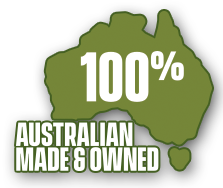Frequently Asked Questions
Curious to know more about SONIC Natural Farming products and services? Check out our frequently asked questions for quick and comprehensive answers to our most common queries.
Biological Fertilisers FAQs
SONIC Liquid Fish and Seaweed Biofertilisers contain native microbial strains isolated from soils well-adapted to Australian conditions. These microbes enhance soil microbiology, support nutrient cycling, balance pH, and help remediate salt and chemical impacts. Fish and Seaweed Biofertilisers also deliver bioavailable organic minerals and trace elements essential for optimal crop growth.
Unlike NPK fertilisers, that just feed plants (synthetic) minerals, biological fertilisers work by delivering organic minerals and boosting the soil’s microbiome—improving nutrient cycling and plant immunity. This leads to stronger, healthier crops, without the potential of mineral imbalances or runoff that NPK fertilisers can cause.
| Feature | Natural Fertilisers (e.g., Fish Hydrolysate) | Synthetic Fertilisers (e.g., Urea) |
|---|---|---|
| Source | Derived from natural materials like fish byproducts, compost, or seaweed. | Manufactured from synthetic chemicals or mined minerals. |
| Nutrient Composition | Contains a broad spectrum of nutrients including NPK, amino acids, and trace minerals. | Primarily provides specific nutrients like NPK in concentrated forms. |
| Nutrient Release | Varies by application: Quick-release when used as a foliar spray (absorbed through leaves); slow-release when applied to soil, feeding plants over time via microbial activity. | Quick-release, providing immediate nutrients to plants but often lacking sustained availability. |
| Soil Health Impact | Enhances soil structure, increases microbial activity, and improves water retention. | Can degrade soil structure, reduce microbial life, and lead to long-term fertility decline. |
| Environmental Impact | Lower risk of runoff and pollution; supports sustainable practices. | Higher risk of leaching, runoff, and environmental harm. |
| Plant Growth | Supports balanced, resilient growth with improved flavour and nutrition; helps achieve higher nutrient density in crops. | May stimulate fast growth but can cause imbalances or fertiliser burn; does not support high nutrient density in plants. |
| Cost | Generally higher upfront cost; long-term savings through improved soil health and using DIY methods for production. | Lower cost; requires more frequent application, as land often becomes dependent on increasing amounts each year, raising costs over time. |
| Application Frequency | Initially applied more frequently to activate soil biology, then less often as natural ecosystems restore balance and fertility. | Frequent applications required to sustain growth; dependence increases over time, creating a perpetual input cycle. |
| Compatibility with Regenerative Practices | Highly compatible; supports biodiversity, carbon sequestration, and soil restoration. | Small amounts may offer a temporary boost, but over time, become unnecessary as regenerative practices and natural inputs rebuild the soil. |
Naturally fermented liquid products, begin working immediately by activating soil biology and delivering bio-available nutrition to plants. Results will vary depending on your crop, soil, and growing practices. For grazing pastures, in poor condition, improvements in soil biology may take a few years to fully develop. When seeding, you can often see faster seed germination and stronger early growth. Orchard and vegetable growers typically notice improved growth, flavour, nutrient-density, and a longer shelf life.
Liquid seaweed extracts are chemically-extracted or heat-extracted to concentrate specific minerals. These processes can result in the loss of some nutrients and trace elements. In contrast, Seaweed Biofertiliser, such as SONIC Liquid Seaweed, is cold fermented, preserving the full spectrum of minerals and trace elements in a bio-available form.
Read Article – Liquid Seaweed Fertiliser Comparison: Ferment Vs Extract
No. SONIC Liquid Fish and Seaweed Biofertiliser products are 100% natural and non-toxic, with no withholding period. Safe for livestock and the environment, they integrate easily into everyday farm routines.
SONIC Biofertiliser products have a mild, non-offensive odour—nothing like the strong odour of many emulsion fertilisers. This is because these products are naturally fermented using beneficial microbes, which help maintain balance during the processing, and preventing the liquid fish and seaweed from going rancid. When spraying, you may notice the scent initially, but it will dissipate quickly.
How to Reduce Farm Odours with Beneficial Microbes
We source leftover fish waste from numerous fish shops around Australia. These shops provide us with their ocean-caught fish after it has been processed for human consumption. Once the fish is collected, it is placed in large barrels or IBC containers. Once the fish is collected, it is placed in large barrels or IBC containers. Then the fish is cold processed (fermented) using microbial cultures, until the fish breaks down and becomes a rich liquid mineral concentrate that plants can easily absorb.
Turning Fish Waste into Premium Hydrolysate Fertiliser
Liquid Seaweed for Livestock FAQs
Yes, SONIC 100% natural Liquid Seaweed Probiotic Mineral Supplement is suitable for all farm animals, including cattle, sheep, horses, goats, alpacas, pigs, poultry, and even pets. It can be used regularly or during times when feed quality is poor or when animals are under higher stress, such as during calving, foaling, or lambing.
Administer Liquid Seaweed to the animals’ water, (1:5-1:10 dilution), or directly to their feed. It can also be used undiluted as an oral drench for sick or malnourished animals, providing a quick mineral boost. Additionally, you can spray it on dry feed, mix it with grain, or add it to natural mineral lick blocks.
*Note: when administering diluted with water, use within 2-3 days. Enable access to a fresh water. Do not store in diluted form.
You can administer SONIC Liquid Seaweed Mineral Supplement to animals weekly, fortnightly, monthly, or quarterly, depending on their needs.
Yes, SONIC Probiotic Liquid Seaweed can improve livestock feed efficiency by supporting the gut microbiome. The polysaccharides in kelp, like alginates and fucoidans, act as prebiotics, while the natural probiotics in these mineral supplements help to strengthen digestion. Better digestion means better nutrient absorption and feed efficiency.
Yes, SONIC Liquid Seaweed is 100% natural, with no additives, preservatives or stabilisers. It is particularly beneficial for animals during periods of higher demands or stress, such as pregnancy or lactation. It provides easily absorbed organic minerals that can have a calming effect, supporting overall health and well-being.
On-Farm Production FAQs
SONIC On-Farm Systems empower farmers to take control of their fertiliser supplies. With hands-on training, fully serviced Biofertiliser Production Systems, raw ingredient supplies, and lifetime support, we help farmers produce these premium products independently, giving them greater flexibility and substantial cost savings.
SONIC On-Farm Production pricing is primarily based on system size and first batch quantities. With an on-farm system, farmers produce biological fertilisers, at a fraction of the cost of commercial options, by eliminating shipping fees, reusing storage containers, and reducing product costs.
How a SONIC DIY Biofertiliser System Pays for Itself in Under 6 Months
We offer two flexible farm-based options, both including installation and setup of the system, with all the necessary ingredients required.
- Fully Operated On-Farm System: Our team visits your farm at interval stages, to process fresh batches of biofertiliser. This hassle-free option ensures consistent, guaranteed high-quality products, without requiring your direct involvement.
- Combined Production and Training: We include 1:1 training with your first batch, so that you can continue operating the system self-sufficiently.
With over 14 years of experience, we’ve streamlined the process to make it easy for you. Our 1:1 training combines hands-on learning while producing your first batch right on your farm. Our training sessions give you the know-how, the practical knowledge, and the confidence to run a SONIC DIY Biofertiliser Production System at scale.
After the initial setup and training of a SONIC DIY Production System, we offer ongoing support to ensure your production processes run efficiently and easily. Support includes:
- Lifetime Phone/Email Support
- Scheduling Management
- Raw Ingredients Supply
Yes, SONIC On-Farm Biofertiliser Production Systems are customised to meet the specific needs of your farm and crops. Each farm is unique, so we tailor the production schedule and system size to align with your specific spray regime and requirements.
Click here to get a Customised Quote
Product delivery and On-Farm Production Services are available for farmers Australia-wide, ensuring convenient access to high-quality biofertilisers and expert support, no matter where you’re located.
Rates and Usage FAQs
Yes, SONIC Biological Fertilisers are compatible with standard spray equipment, making them easy to apply with your existing setup. Suitable spray equipment includes; Boom sprayers, Airblast sprayers, Tractor-mounted sprayers, Aerial sprayers (drones and aircraft), and Fertigation systems. Fill your spray tank or mixing container with water before adding the Biofertilisers to prevent foam buildup. Once mixed, use the solution within 48 hours and do not store in diluted form.
SONIC Biofertilisers are double filtered to ensure smooth passage through fine sprayers and irrigation systems without clogging. To protect the biological integrity of the products, however, use larger nozzle and screen sizes, or no screens at all, maintaining a spray pressure below 55 psi. This helps prevent damage to the living microorganisms in the fertilisers.
To ensure you get the best possible results, use biofertilisers within 3-6 months from the batch date. This will allow you to take full advantage of the products’ peak biological performance and deliver the most benefits to your soil and crops.
Biofertilisers work optimally when using lower rates, more frequently. For grazing pastures and orchards, apply three or more times per year—particularly during the first one to three years of use or when transitioning from synthetic fertilisers. For small mixed crops and seedlings, apply once a week or fortnightly during early growth stages, and fortnightly to monthly for established plants.
The best time to apply biological fertilisers is during overcast conditions, just before or during rain, or later in the day when temperatures are cooler. These conditions help protect the living microbes in the fertiliser from heat and UV exposure, giving them a better chance to establish in the soil.
See Article – Top 3 Strategies To Get The Most From Your Biological Fertilisers
If your biofertiliser has been sitting around for a while, it might not pack the same microbial punch. Our biofertilisers are best used within 3–6 months. That said, if it has a strong, foul odour, it’s probably gone off and won’t do your soil any favours. You’re better off burying it in the ground or adding it to compost.
How to Make Compost for your Garden and the Farm
Ready to Start Boosting your Soil Health but got no clue where to start?


Experience cost-savings and sustainability with us!
Trusted by Australian Farmers
COST SAVINGS
You really can see the difference, just driving up the road. We’re happy, and it has actually saved us a lot of money on extra fertilisers.
GREAT RESULTS
If I see something once and something that dramatic, I know it’s got to be doing good.
RESILIENCE
I think it’s doing a fantastic job! We have had the best year with the most tree stress.
Talk to us to find the best supply option for your farm.

